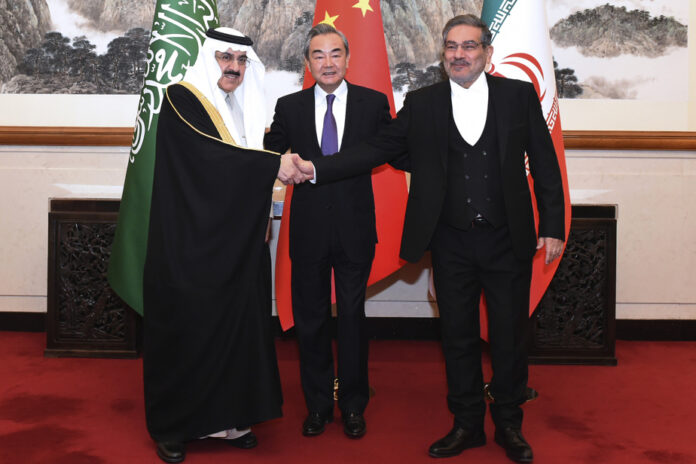The press largely echoes the rapprochement between Saudi Arabia and Iran under the aegis of China. Several analysts see it as another sign of the rise of China and the decline of the United States, particularly in the Middle East. Behind this initiative from Beijing, energy is probably one of the main motivations.
Even though it has made a commitment to carbon neutrality for 2060, China knows that it is highly dependent on oil and gas imports for many decades to come. It is said to have even been struggling for the past fifteen years with an “energy obsession”, because of its dependence – and vulnerability – on supplies from abroad. Yet it was the United States that was once said to have such an “obsession.”
At the turn of the century, Beijing even adopted a policy called “Going out”, a kind of oil diplomacy by which the Chinese government encourages national oil companies to get their hands on hydrocarbons wherever they are.
And like the United States in the 1980s, which deployed military bases in the Middle East to secure the Strait of Hormuz, where the majority of oil from this region circulates, China has greatly developed its navy. Also to secure the passage of oil tankers in the Strait of Malacca, in Southeast Asia, through which passes most of its oil imports.
How did China get here? In the mid-1990s, thanks to its tremendous economic growth, China experienced a very strong increase in its fossil fuel imports. In the case of oil, its imports have multiplied by five over the past 20 years, now totaling 10 million barrels per day (2021), more than those of the United States (eight million, half of which comes from from Canada).
Result: its consumption of black gold is made up of 70% of foreign sources.
This energy dependence on the hydrocarbons of the countries of the Organization of the Petroleum Exporting Countries (OPEC) has thus increased, while that of the United States has declined sharply. Americans were indeed very dependent on OPEC until the 2010s; they were importing nearly six million barrels a day in 2005. By 2021, that figure had dropped to less than a million, thanks to the shale oil revolution, which has caused domestic production to explode.
After the United States, it is therefore China’s turn, as a great power, to depend on fossil fuels from the Middle East. A situation that considerably increases Beijing’s strategic interests in this region.
Iran also represents a certain interest for Beijing. Despite Western sanctions on its oil because of its desire to acquire nuclear weapons, Iran remains OPEC’s fourth largest producer. Its reserves of oil (the third in the world) and gas (the second largest) are a highly strategic asset for China in terms of energy. Long-time rivals, Riyadh and Tehran both want to continue selling their hydrocarbons to the Chinese, and thus enrich their public treasury with billions.
In terms of energy, these three countries have growing mutual interests, which leave little room for the American giant, formerly a central player in the Middle East.
How will this convergence of interests influence the price of oil? Greater geopolitical stability between the two great Persian Gulf rivals is always a good thing for the oil market, as any geopolitical risk directly affects prices.
However, the two oil powers have divergent approaches. The undisputed leader of OPEC, Saudi Arabia generally advocates tight supply management in order to obtain a relatively high price, while Iran wants to sell as much oil as possible, since its production has fallen sharply over the past five years. years due to sanctions and the pandemic.
It remains to be seen how China will arbitrate the disputes that will arise from these two divergent approaches and decades of geopolitical rivalry.


















